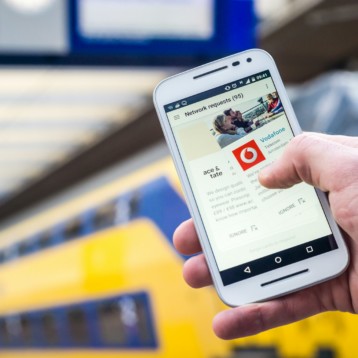
Can you imagine life today without access to fast, reliable internet? It’s almost impossible when you consider how connected this world has become. From businesses and jobs to education and healthcare, broadband internet plays a pivotal role in determining quality of life and enabling access to opportunities.
Closing the Digital Divide Between Rural and Urban Areas
The contrast is stark – while urban residents enjoy blazing fast fiber internet, much of rural America still lacks basic access to broadband connectivity. Without high-speed internet reaching every home, remote communities get left behind across major aspects of life.
Take education for example. When schools rapidly transitioned online during COVID-19 lockdowns, the “homework gap” was exacerbated, preventing 15 million students from fully participating. Distance learning and remote education aren’t frills but necessities nowadays. And without reliable broadband connectivity facilitating access, rural students face a severe disadvantage.
Healthcare access suffers too without the connectivity required for telehealth and virtual care options. So does economic participation – with global commerce increasingly digital, rural small businesses and startups can’t reach wider markets or even compete locally against better-connected firms.
Clearly, broadband infrastructure requires coordinated public and private investment to reach places where market forces fail to deliver connectivity because it just isn’t profitable enough. But the long-term payoff makes it worthwhile when you consider the human impact. The internet is critical for quality of life, ensuring rural communities aren’t relegated to second-class access in education, healthcare or economic participation.
Securing Funding to Connect the Unconnected
Recognizing the urgent need for rural broadband, federal, state and philanthropic programs offer grants and incentives promoting build outs in underserved areas by public, private and nonprofit ISPs.
Key initiatives like the ReConnect and Rural Digital Opportunity Fund have distributed billions in subsidies and loans to facilitate rural network deployment. Priority allocations are given to higher speed fiber optics future-proofing business and residential use cases.
Separately, innovation grants encourage novel wireless and satellite coverage solutions in remote regions with challenging terrain. Funding models also enable rural towns and co-ops to self-supply much needed local connectivity.
With multifaceted support, building the required infrastructure to deliver high-speed broadband throughout rural America can transform millions of lives previously devoid of access. The internet is critical for quality of life, and these coordinated efforts strive to make essential connectivity guaranteed regardless of geography.
Empowering Innovation Through Fast Broadband Connectivity
Speaking of economic participation, broadband is perhaps most transformative in fuelling innovation and growth. With ultrafast fiber optic broadband, rural entrepreneurs can leverage cutting-edge technologies and collaborate seamlessly with partners located anywhere.
Research shows that high-speed connectivity provides a thriving platform for sharing ideas, accelerated research and development, and rapid prototyping of innovative solutions. Rural startups tapping into global knowledge gain a competitive edge in creating breakthrough products even without proximity to urban hubs.
In fact, a Stanford study found that broadband access led to increased firm productivity and job growth in rural areas. And people know access facilitates technology adoption – once rural small businesses get high-speed fiber broadband enabling quick data transfers and video meetings, they actively invest in advanced solutions like cloud computing and AI.
The takeaway is clear – while rural areas may lack the density of innovators, broadband connectivity tears those barriers down and empowers entrepreneurs to punch above their weight class. For economic inclusion, the internet is critical for quality of life, fuelling opportunities in even the most remote locales.

Building a Future-Ready Digital Workforce
Rapid technological shifts don’t wait for laggards. As automation, AI and advanced technologies transform the job landscape, the need for digital skills and online education has skyrocketed. Students well-versed in digital literacy and emerging tech fields will be equipped for the jobs of tomorrow.
But without universal broadband access, large swathes of rural youth risk being left behind. They can’t acquire specialized tech knowledge or credentials for high-paying remote careers if they lack connectivity at home enabling rich digital learning experiences. Nor can they gain early exposure to technologies redefining industries without hands-on access facilitated by broadband.
As remote work gains traction globally, those digital skills and tech competencies become even more valuable in accessing specialized opportunities unbound by geography. By connecting all communities and facilitating digital upskilling, broadband infrastructure investment pays dividends in nurturing a future workforce prepared for the increasingly digital economy.
Driving Economic Growth in Rural Communities
You’ve touched on the entrepreneurship potential, but wider community gains arise from rural broadband expansion too. With high-capacity broadband switched on, traditional industries can augment operations using advanced analytics and internet-of-things sensors while farms leverage precision technology to be more efficient.
This data-driven evolution boosted by connectivity ripples across supply chains, making entire regions more productive. Broadband also attracts investors taking note of lower overheads but high-skill talent in newly connected areas. Construction booms follow internet infrastructure investment, along with growth of the service sector catering to incoming professionals and businesses.
With access to online platforms, rural artisans, crafters and cottage industry producers market unique wares to urban buyers globally too. Previously geographically bound, broadband provides market access to sell beyond locales, boosting prosperity. And new remote work norms make rural life increasingly appealing for location-fluid white-collar professionals seeking better cost of living and quality of life.
Cumulatively, it adds up to a sea change where broadband connectivity transforms rural community growth trajectories for the better. The research shows it – broadband adoption consistently lifts employment rates, household incomes and GDP growth in rural areas. For economic inclusion, the internet is critical for quality of life, powering opportunities outside metros.
Realizing the Potential Through Broadband Infrastructure Investments
Hopefully it’s evident by now that universal broadband infrastructure requires coordinated public and private investment push, not just market forces. The recently passed federal infrastructure bill provided historic funding allocating $65 billion for broadband expansion.
But money alone doesn’t guarantee speedy rollouts or community adoption. Smart regulations and policies incentivizing providers to expand access into historically difficult to cover rural regions are vital. Big cable behemoths focus on profit maximization where returns justify infrastructure expenses.
That’s why community-owned cooperatives and non-profit ISPs willing to balance fiscal sustainability with social goals play a crucial role – their commitment centers on equitable access. With funding and supportive policy frameworks backing them, these stakeholders can spearhead rural broadband infrastructure advancement.
And the investments must continue as technology relentlessly marches forward. Broadband standards and network capabilities should evolve from basic needs to staying ahead of innovations requiring more robust connectivity. Think healthcare robots, self-driving cars and immersive metaverse experiences coming down the pipeline.
But console yourself knowing one-time infrastructure pushes get the ball rolling by closing coverage gaps. And the benefits across healthcare access, education, economic participation and overall quality of life outweigh costs for generations to come.
Enabling Remote Work and Flexible Lifestyles
The pandemic triggered a remote work revolution across white-collar professions. And with broadband providing connectivity, rural areas become viable destinations for location-fluid knowledge workers seeking better cost of living and lifestyle perks.
Telecommuting full-time also supports income diversification for rural residents through freelancing gigs accessible via online platforms previously requiring urban relocation. Rural coworking spaces foster community too while remote workers circulate dollars locally.
It’s a win-win adaptation where broadband enables choice in work format and geography. For those pursuing flexible lifestyles, the internet is critical for quality of life when deciding where to call home.
Attracting Business Expansion and Investment
What incentives do rural communities offer businesses seeking expansion? Think abundant land, cheaper real estate, potentially reduced tax burdens and loyal localized workforces. Oh and world-class broadband connectivity rivaling metropolitan areas!
That last infrastructure component has become vital for factories integrating internet-of-things sensors for automation and supply chain coordination. And across industries, broadband enables integration of data analytics and cloud platforms improving efficiency.
Recognizing connectivity gaps are bridging, investors actively target rural zones with sustenance economies for export scale-ups. Broadband expands horizons – data centers touch down in Appalachia while e-commerce breathes new life into Main Street storefronts.
Virtual Care and Telemedicine Advancements
Broadband has been a lifeline for healthcare provision to isolated communities where residents must travel hours seeking in-person treatment. Telemedicine platforms bridge vast distances between rural patients and medical experts.
Remote patient monitoring also improves outcomes and lowers care costs using internet-connected health devices measuring vitals. Seniors manage chronic conditions from home while accessing specialists for video calls discussing concerns after data sync.
And transmission of medical scans enables rapid digitized diagnostics from afar. On education frontiers too, teletraining expands skills for rural healthcare workers starved of development opportunities previously. The internet is critical for quality of life when evaluating care access.
Online Education Opens Doors for Rural Students
Broadband offers transformative potential to bridge gaps for rural students too often lacking course variety or advanced academic tracks from stretched local schools.
Virtual classes taught by specialized instructors in other regions expand offerings for STEM or vocational exposure. And devices with reliable connectivity break library dependency allowing self-directed learning supplementing traditional formats.
Platforms like online coding camps introduce rural children to in-demand technical disciplines unlocking careers once deemed geographically inaccessible. And remote tertiary degrees widen participation – rural talent needn’t relocate or commute expanding access to higher earning trajectories.
The Wrap
Fast, reliable broadband internet has clearly emerged as essential infrastructure critical for access to knowledge, opportunities and bridging equity gaps. But tens of millions still remain without connectivity, mostly in rural geographies abandoned by market economics.
Remedying this digital divide requires recognizing broadband as a public good warranting collaborative efforts between policymakers, providers and communities. Once in place, enrichment flows spanning education, telehealth, economic growth, and the technology foundation vital for future innovations.




![Guide To Using JCP Kiosk – [ Features & Benefits ]](https://thefutureofthings.com/wp-content/uploads/2024/03/image-4-358x358.png)





